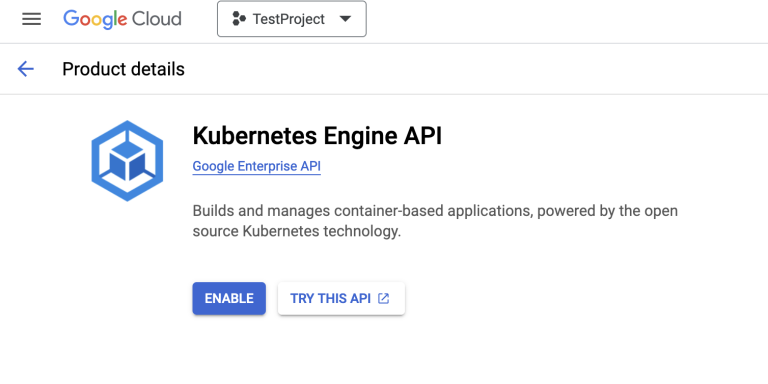Creating an Azure Kubernetes Service (AKS) cluster
Contents
Instructions on setting up a managed k8s cluster on Microsoft Azure
Prerequisites
You will need the following:
TODO
- An Azure account
-
Log in to Azure
- Az CLI
-
Command-line tool to manage resources in Azure. Download it TODO
- Kubectl
-
The Kubernetes command-line tool, kubectl, allows you to run commands against Kubernetes clusters. Download it from Kubernetes.io.
Create an AKS cluster
TODO
-
Enable the Kubernetes Engine API. If the kubernetes engine API is not enabled for your GCP project, you need to enable it.

-
Click Create to launch the k8s cluster wizard.

-
Follow the cluster creation steps by setting the values based on your cluster needs.
Make sure to chose kubernetes version >= 1.27 which is requried by XP operator.
Connect to the cluster
TODO
-
Once the k8s cluster is created, click the cluster name
-
Then click Connect on the top middle section of the page. This shows you the gcloud command you can use to connect to the k8s cluster from your computer.
-
Copy and run the gcloud command. If the command outputs
kubeconfig entry generated for <newly-created-k8s-cluster-name>, it means proper kubectl config is generated on your computer and you are successfully authenticated to the k8s cluster. -
To verify your access to the k8s cluster run the command
kubectl get namespacesThis should display the list of namespaces in the newly created k8s cluster. The "Age" column in the output shows how long has it been since the namespaces are created.
Storage classes
When connected to your cluster, list the available storage classes with this command:
kubectl get storageclassesTODO: Example
This should display the list of storage classes provisioned by GKE cluster.
TODO
To run XP in cluster mode, a ReadWriteMany storage class (NFS type filesystem) must exist.
Azure offers a managed service for shared filesystems called Azure Files, which can be used to provision an NFS filesystem to your AKS cluster.
A cost effective alternative is to run your own NFS server.
TODO? Does Azure files work?
To provision an EFS storage, you will need the